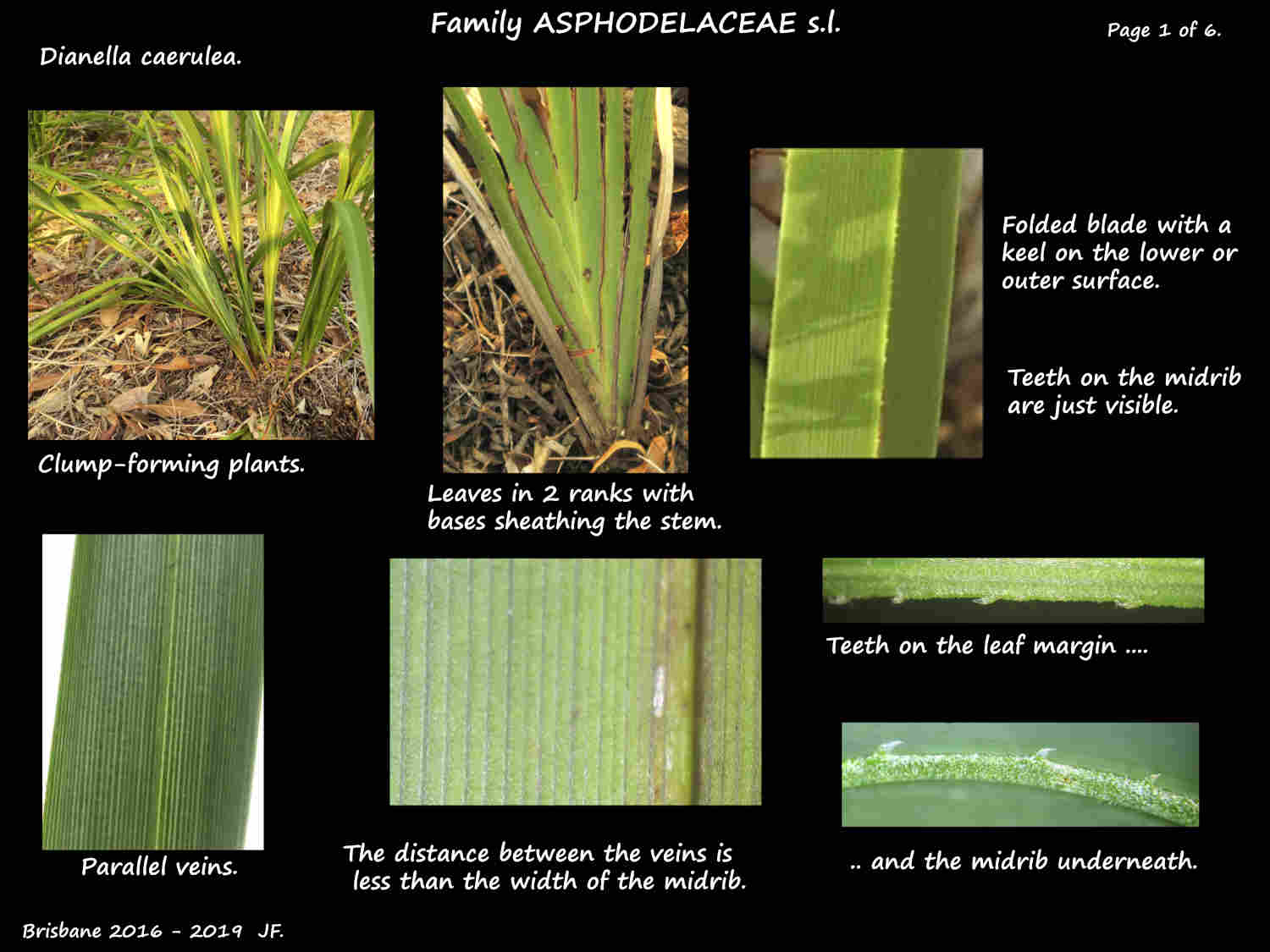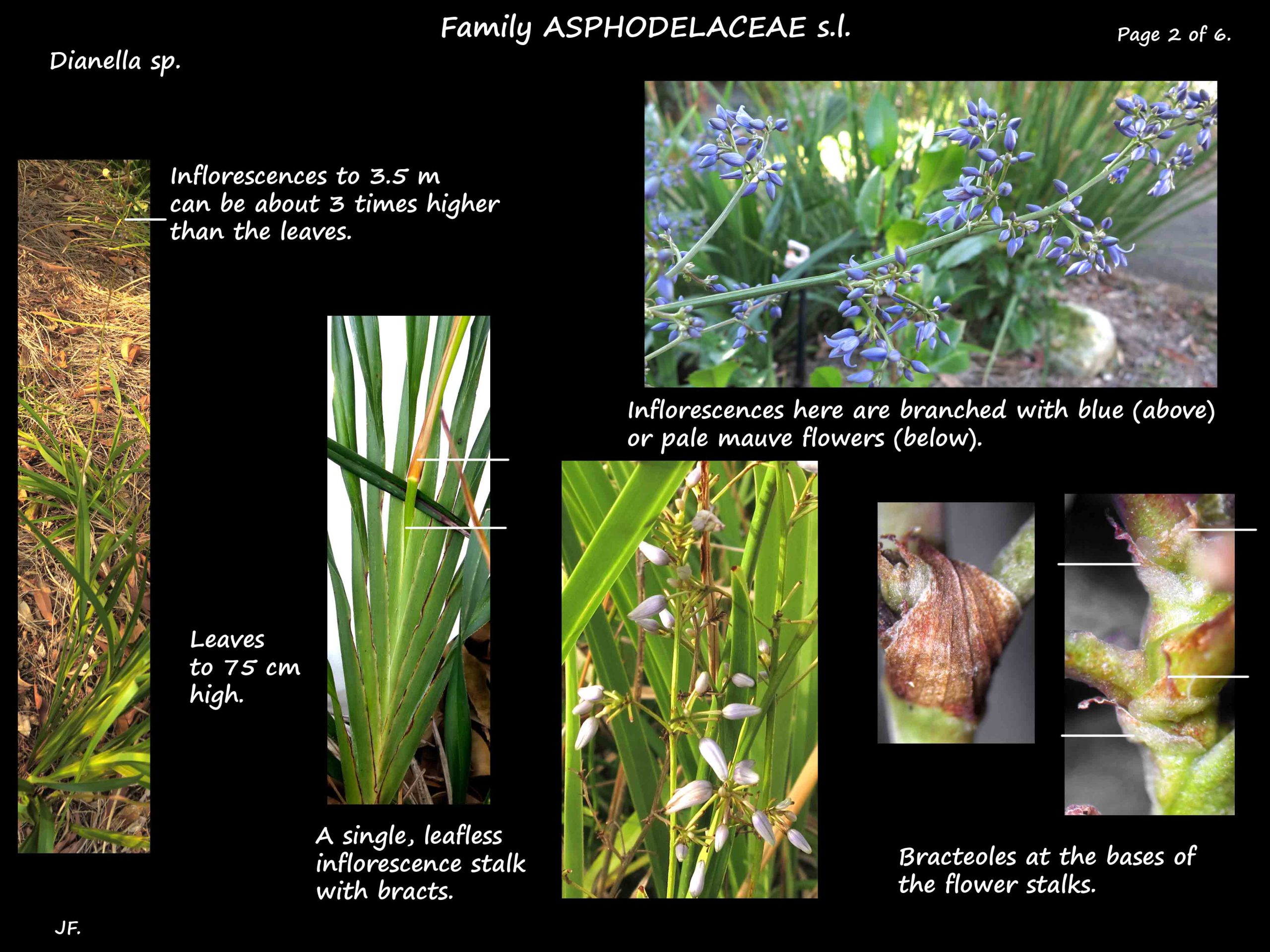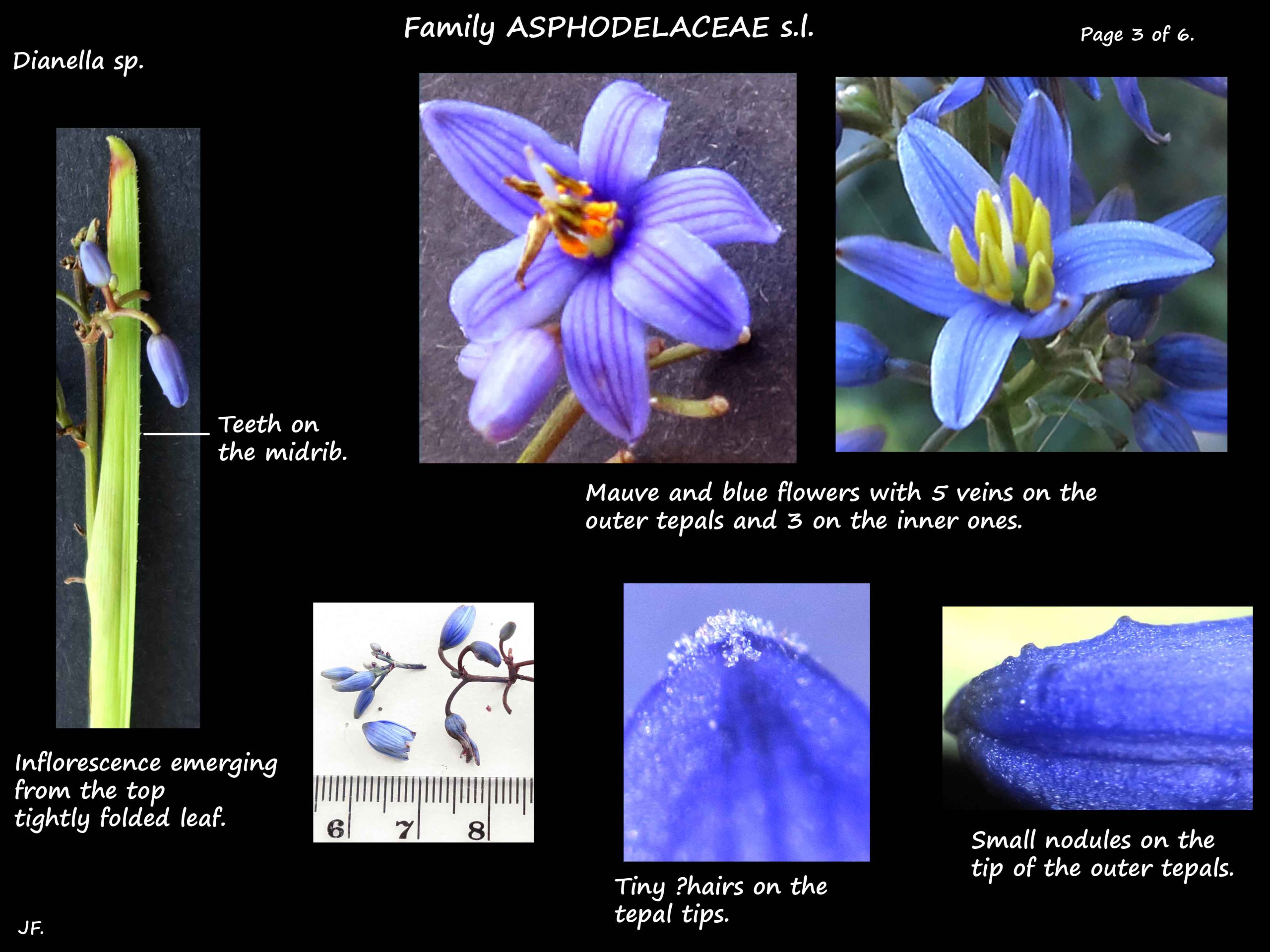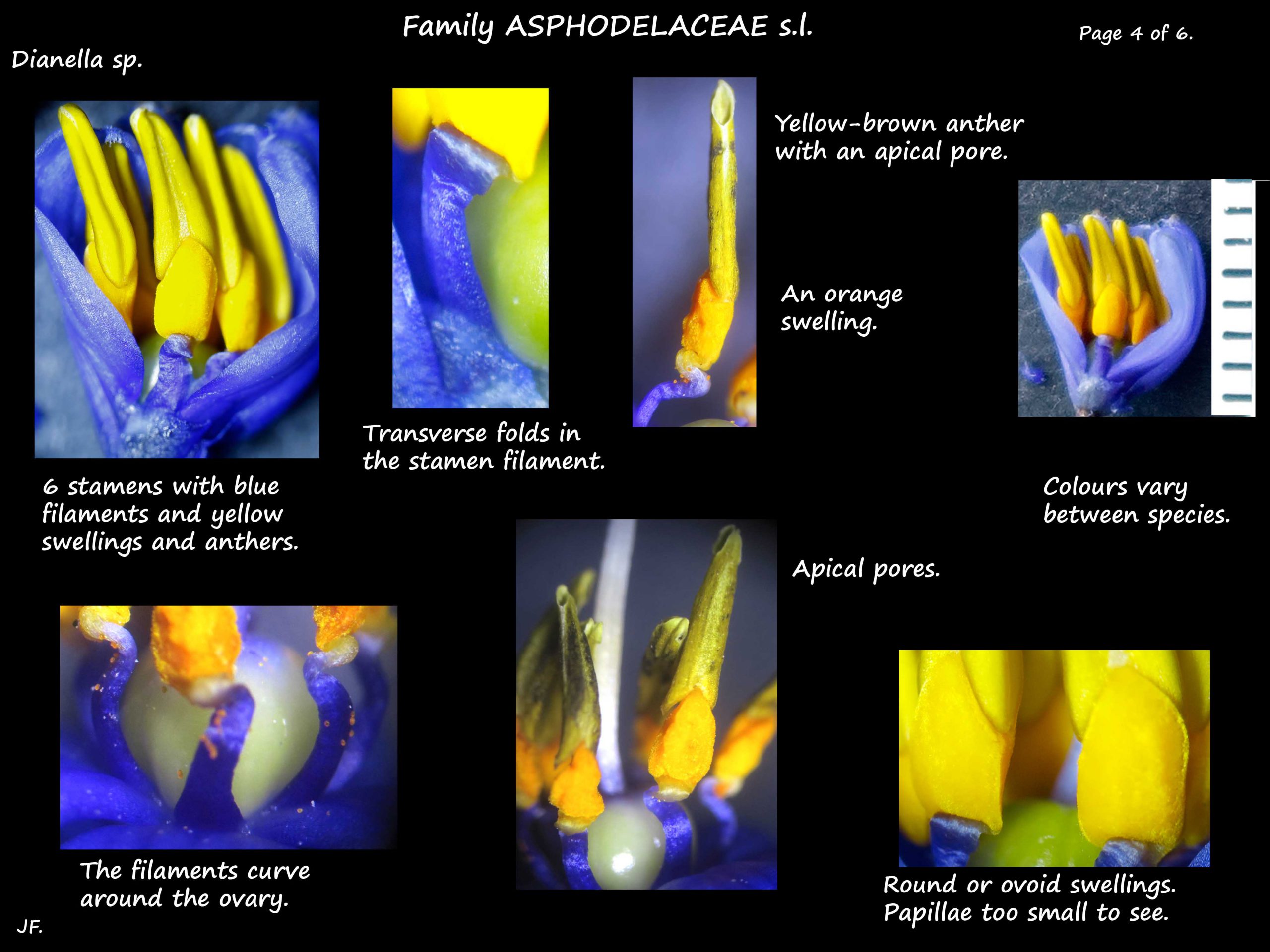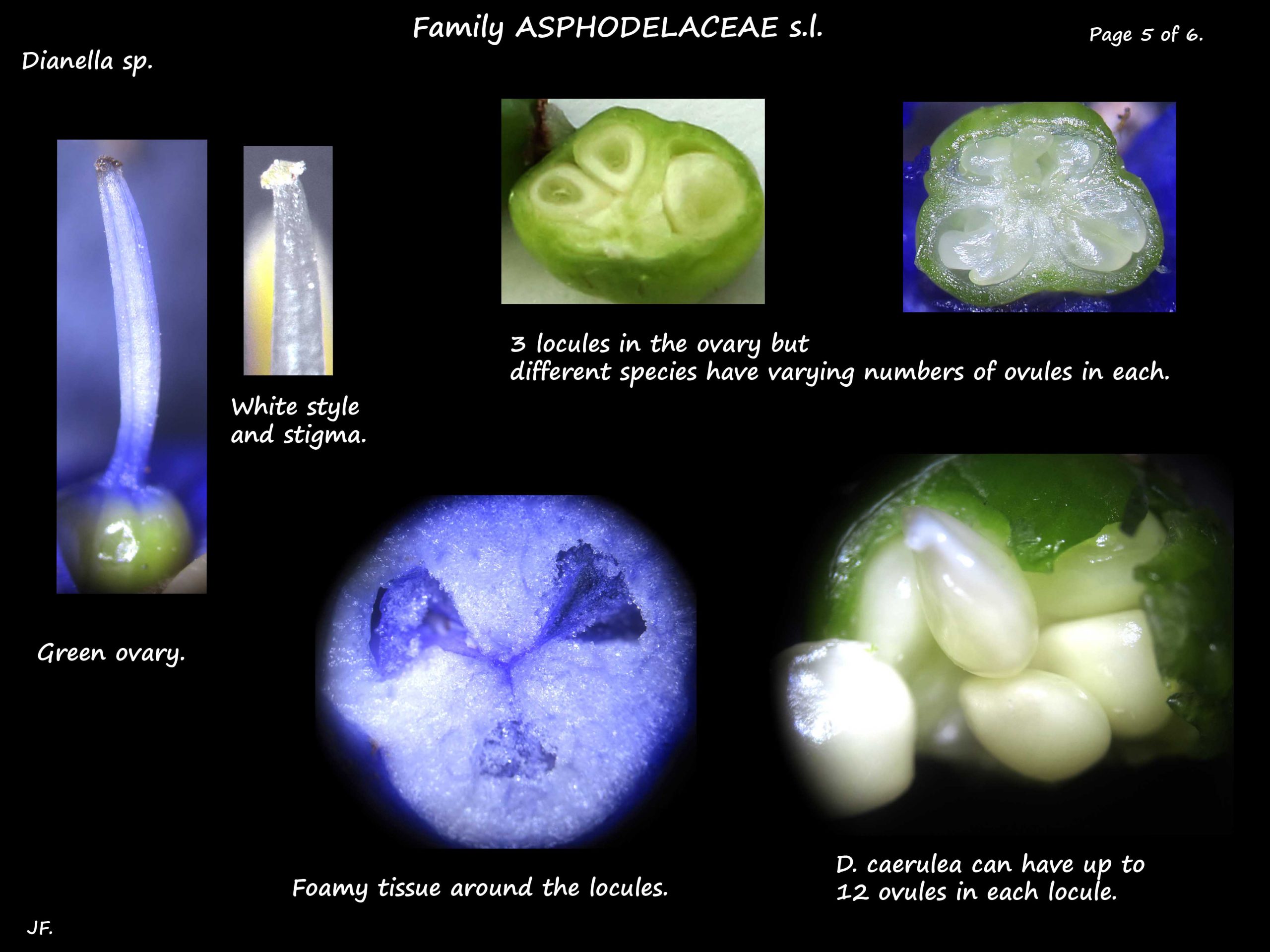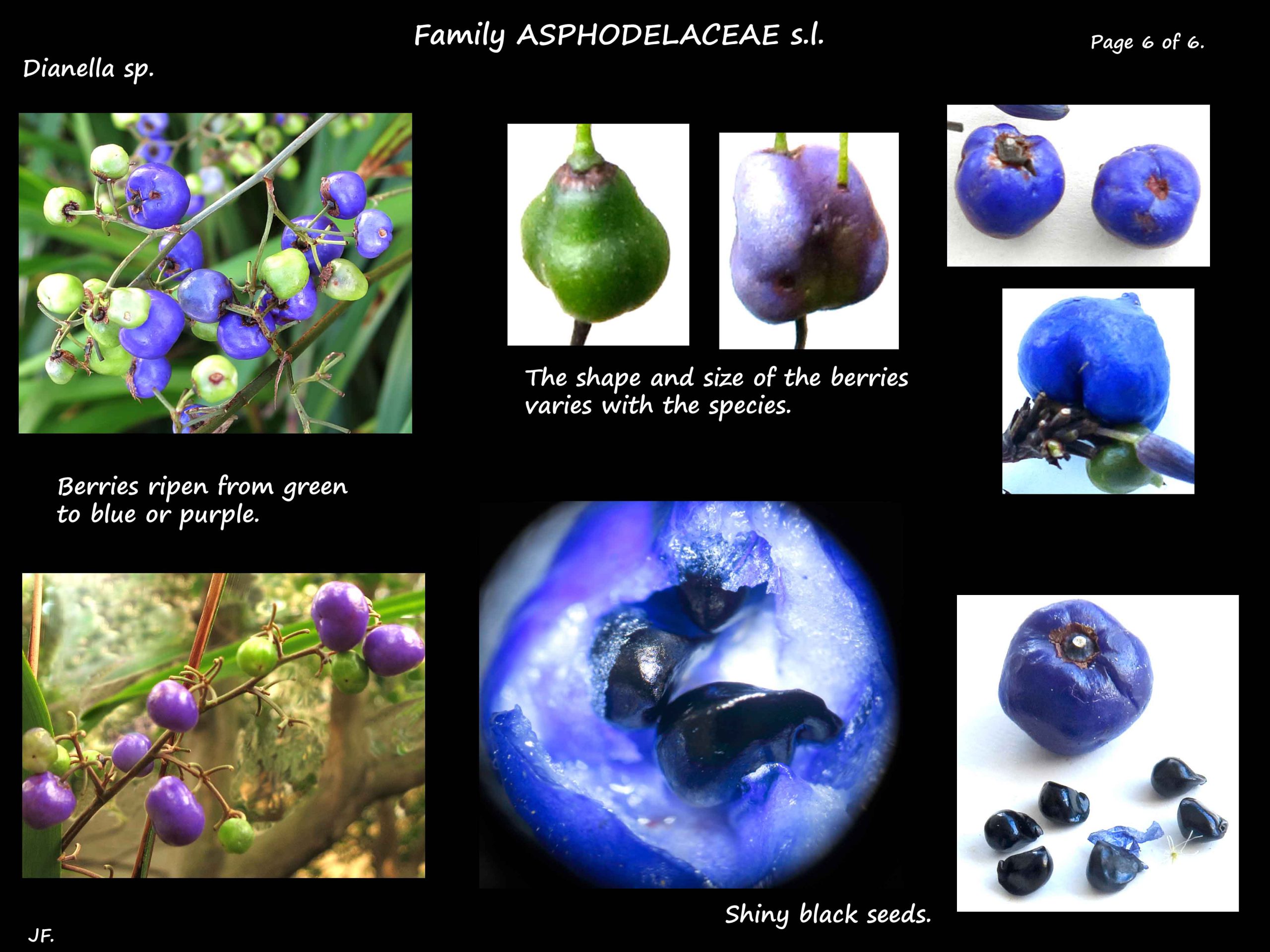Dianella caerulea.
The Blue Flax lily is in Family Asphodelaceae s.l.
Dianella caerulea is a very variable species with up to 7 varieties and some other
species are very similar so they are sometimes referred to as the D. caerulea complex.
D. caerulea is seen throughout Queensland and is a common garden plant.
It can grow to nearly 2 m high from rhizomatous roots.
The dark green, fibrous, strap-like leaves are up to 75 cm long and 1 to 2 cm wide.
The leaf sheaths are tightly folded with an acute keel.
Dianella caerulea var. caerulea has tiny teeth on the leaf edges and lower midrib.
Inflorescence stems, up to 3.5 m high, hold the flowers well above the foliage.
Inflorescence stems are branched and have bracts but no leaves.
Each branch can have up to 25 flowers on stalks up to 1 cm long.
Flower colours include dark blue, greenish-white or blue, and a bronze-blue.
The 6 stamens have a yellow to orange swelling at the top of the filament.
The bright blue filament has transverse wrinkles.
The yellow or yellow-brown, basifixed anthers, 3 to 5 mm long, open via apical pores.
The dark green, superior ovary has 3 locules with 6 to 12 ovules in each.
There is a white style and stigma.
The roughly spherical berries, up to 1.2 cm long, are a bright blue or mauve.
The shiny black seeds are up to 4 mm across.
With flowers similar to Dianella in Australia are Stypandra and Thelionema.
They all have flowers with free tepals that spread outwards or backwards.
Dianella has stamen filaments with a spherical or ovoid swelling at the top that is covered
in papillae and their fruit are berries.
The fruit of Stypandra and Thelionema are capsules and their stamen filamens do not have a swelling.
The nodding flowers of Stypandra have stamen filaments whose upper half is densely hairy.
The seeds are biconvex with a sharp, ridged edge.
Thelionema flowers are erect and the stamen filaments are only hairy in the middle.
The seeds are flattened with rounded edges.
J.F.
